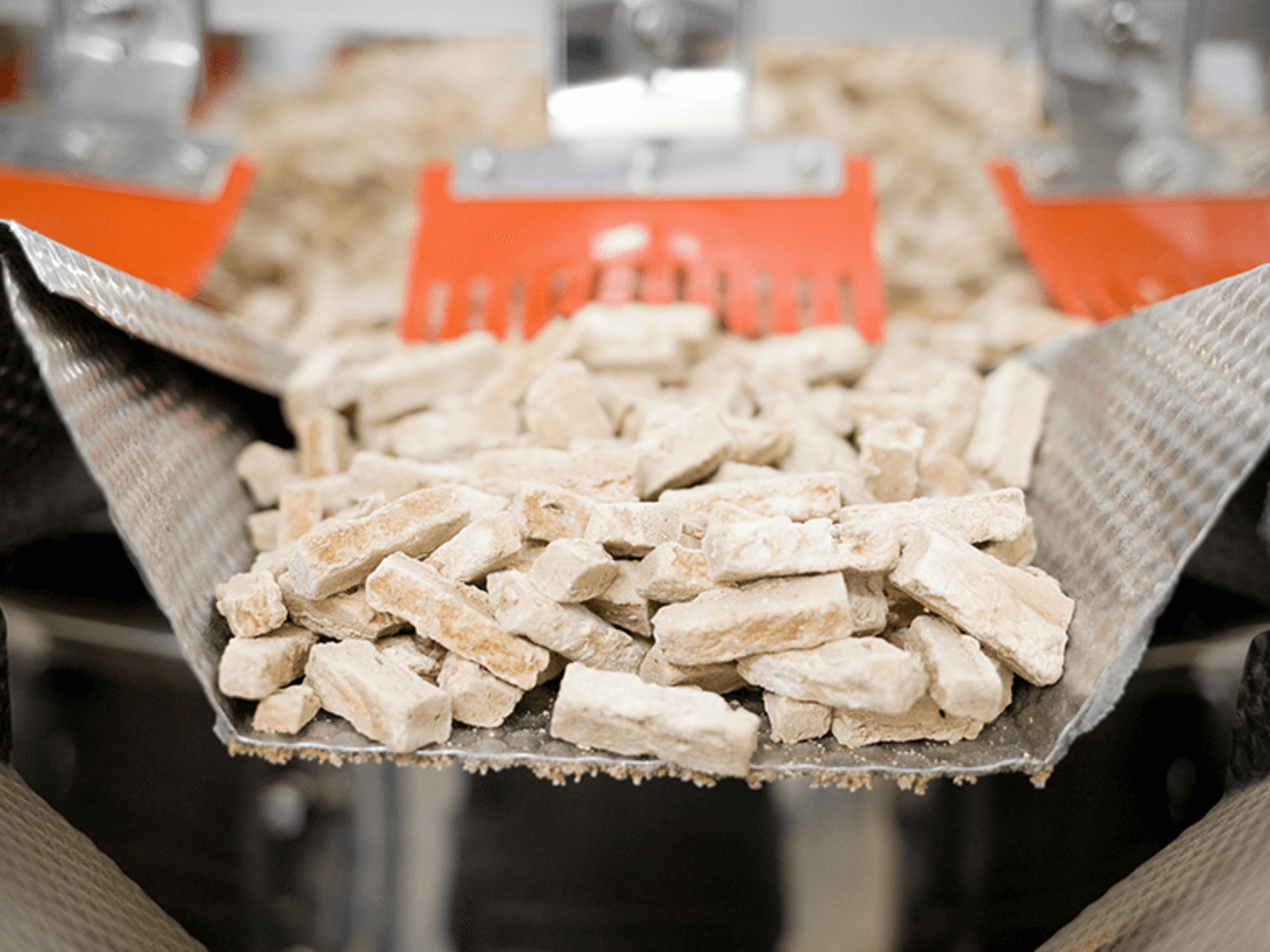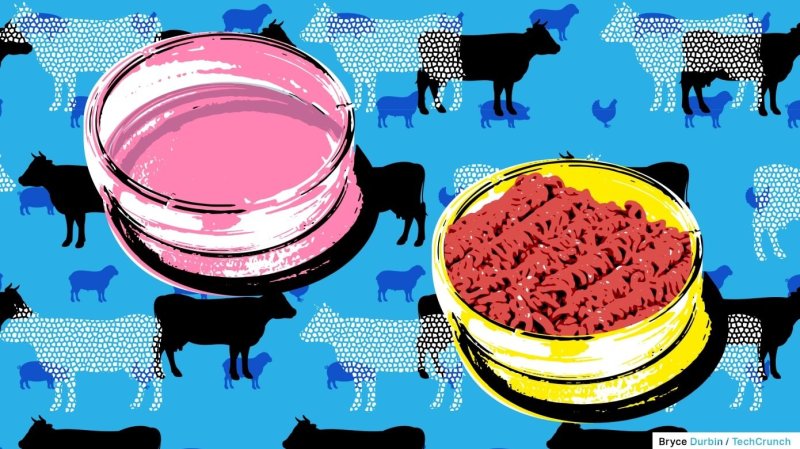The massive economic development and urbanisation seen in the past 50 years, coupled with a growing worldwide population and the emergence of protein-rich diets, such as the Atkins and Keto diets, have led to an exponential rise in meat consumption. The amount of meat consumed per capita levels has nearly doubled since 1990 and meat production has more than quadrupled since the 1960s. Globally, we consume 350 million tonnes of meat per year, most of which in Europe, Australia and North America.
However, with inflation, the costs of meat and of the cereals used to feed animals is rising, raising the spectre of food insecurity in the EU on account of the increased import price of cereal. Climate change and conflicts worldwide are leading to food insecurity, malnutrition, and protein and micronutrient deficiency. In addition, concerns are growing over animal welfare. Meat production also negatively impacts the environment, with cattle ranching and crop plantation contributing to deforestation, and increasing methane, carbon dioxide (CO2), nitrous oxide and water vapour emissions.
Several alternatives to meat have emerged in recent decades, and some are readily available in Europe’s supermarkets. The most common are soybean products. These have been met with consumer reticence, owing to their cost and an arguably unappetising taste. They have a heavy impact on the environment, contributing to roughly 20 % of tropical deforestation.
Another proposed solution is powder-form insect-based products. Such products are slowly entering the EU market and the European Commission recently approved an additional, third, insect species. However, once more, consumer perception has been cautious, possibly on account of cultural differences compared to parts of the world where such products are part of the traditional diet. In addition, the products found in supermarkets today tend to be highly processed.
Microbial protein, that is, protein biomass derived from bacteria, yeast, filamentous fungi and microscopic algae, could be a viable solution. It involves the fermentation of sugar-fed microbes in large, heated industrial bioreactors, which could alleviate dependency on agricultural land use. A recent study conducted by German researchers has estimated that replacing a fifth of meat from cattle with fungi ‘meat’ by 2050 could halve annual deforestation and related CO2 emissions.
The concept of eating microbial protein is not new. Humans have been consuming products made from fungi (beer and bread) and bacteria (yoghurt, cheese) products since the development of the first Neolithic communities. The first industrial attempt at microbial protein production was made in the 1970s with Pruteen, a protein-rich product made from methanol-oxidising bacteria and used to feed pigs. Pruteen was discontinued in 1979 because of its price and unfounded reports of allergic reactions. Quorn® is a mycoprotein-based product produced from fungi, invented in 1985 and still sold today. An Irish-led Horizon 2020 project, currently under way, is seeking to produce microbial protein from fungi fed with pasta, bread and beer residues. A few products already on the market include milk, eggs, dairy, mycelium ‘meat’ and even seafood analogues.

It seems that microbial ‘meat’ could offer a way to reverse climate change, protect animal welfare and respond to the needs of a growing world population. But do we have the technology in place? What would be the energy requirements for producing large amounts of microbial protein? Are we ready to change our consumption habits and do we trust the safety of artificially-produced meat? Is EU legislation up to date and able to adapt to animal meat substitutes?
Potential impacts and developments
By using fewer land resources for crop and animal farming, cutting deforestation and biodiversity loss, and reducing greenhouse gas emissions, microbial ‘meat’ could help to reverse climate change. It would also offer a faster and more cost-effective way to ensure food security for a growing world population. In addition, it could be used as animal feed. However, mass production would require large, power-hungry generators. Therefore, it would need to be coupled with ‘green’ energy in order to be environmentally sound. Furthermore, the use of autotrophic or lithotrophic bacteria would reduce the need for sugar feed as a growth source. Bacteria can fix CO2 and methane from the atmosphere and remediate agricultural and water waste, further helping to counter climate change.
What is more, microbial ‘meat’ would be a healthier alternative to red meat. First, it would help regulate our intestinal pH, increasing the proportion of ‘good‘ bacteria, which help prevent diet-related non-communicable diseases, such as tumours, cardiovascular diseases, obesity and diabetes. Second, it would be less sensitive to contamination by common foodborne bacteria such as Campylobacter, Escherichia coli, Listeria and Salmonella. Consequently, it would also require less antibiotic treatment, thus helping reduce the burden of antibiotic resistance in the animal industry, also making it a potentially better alternative than cultured meat. Microbial ‘meat’ does not require pesticides and has a higher protein content than animal meat. In addition, it could be genetically engineered for a fortified vitamin and mineral content, as well as to approximate its taste and texture to that of red meat.

On the other hand, the possibility of using genetically modified bacteria and fungi (GMM) to produce microbial protein has recently attracted political attention because of potential health risks. However, it is debateable whether these products would fall within the remits of the GMO Regulation, since consumers would eat the derived protein, rather than the organism that produced it.
Anticipatory policy-making
Microbial protein is comfortably anchored in EU legislation. It is recognised under the Regulation on Novel Foods, according to the safety principles defined in the General Food Law. Since 2007, EFSA has been compiling a qualified presumption of safety (QPS) list of microorganisms that are safe and can be used in food and feed.
The European Union has a strategy for tackling food security, health and sustainability by 2030 through its new Food 2030 research and innovation policy framework. Microbial proteins are included under the framework’s umbrella of alternative sources of protein that could contribute to a climate-friendly dietary shift by 2030. The EU also supports research into alternative sources of protein. Under Horizon 2020, the European Commission invested €70 million in 15 different projects investigating the potential of plant-, insect-, microalgae- and microbial-based protein sources. Horizon Europe is now offering funding opportunities through its flagship innovation programme, the European Innovation Council. In addition, EFSA launched a funding call in October 2021 for research into microbiomes in food production systems.
The microbial protein market cannot be developed without economic measures to foster sustainable and healthy food production. The EU has introduced a number of policies aimed at facilitating access to finance, improving access to markets, and fostering competitiveness and innovation for small and medium-sized enterprises.
Last but not least, behavioural change will not be possible without understanding consumer habits and barriers to dietary transition, investing in education and raising awareness about healthier and more sustainable choices.































